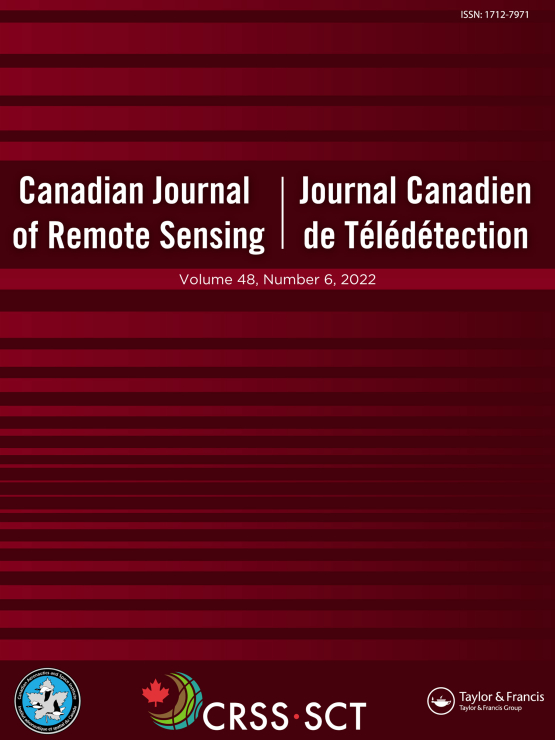Submit a Manuscript to the Journal
Canadian Journal of Remote Sensing
For a Special Issue on
L’Association Québécoise de Télédétection : Towards 50 years of Earth observation innovation and development in Quebec
Manuscript deadline
30 April 2024

Special Issue Editor(s)
GIGNAC, Charles,
Université Laval & L’Association Québécoise de Télédétection (L’AQT)
[email protected]
ROY, Alexandre,
Université du Québec à Trois-Rivières
[email protected]
LEBLANC, Sylvain G.,
Canada Centre for Mapping and Earth Observation, Natural Resources Canada
[email protected]
LECOURS, Vincent,
Université du Québec à Chicoutimi
[email protected]
L’Association Québécoise de Télédétection : Towards 50 years of Earth observation innovation and development in Quebec
L’Association Québécoise de Télédétection (AQT : The Quebec Remote Sensing Association) brings together remote sensing researchers and users from all backgrounds (academic, industry, government, non-profit organization) to develop and innovate in earth observation. The AQT has been a major player in Quebec remote sensing dynamism for the last 50 years.
As we know, remote sensing is a field in constant evolution, which offers considerable advantages for the understanding and the management of our environment. We are convinced that French-speaking researchers have much to contribute to this discipline, but that the language barrier can sometimes hinder the publication of their work. It is with this element in mind that L’AQT and the CRSS join forces to offer an opportunity of first choice to valorize research in remote sensing in French through the publication of a special issue of the Canadian Journal of Remote Sensing.
We therefore invite members of the Earth observation community to submit their work for publication in this special issue. The proposed articles must relate to themes in the large scope of Earth observation, including, but not limited to:
- Remote sensing technologies such as LiDAR, Synthetic Aperture Radar (SAR) SAR sensors, drones or hyperspectral sensors and their applications
- Analysis of remote sensing data through innovative machine learning, artificial intelligence, and big data processing approaches.
- Methodological developments in remote sensing.
- Applications of remote sensing for natural resource management, environmental monitoring, agriculture, forestry, natural risk management, cartography, urban planning, etc.
We especially encourage emerging students to submit their work for publication in this special issue. We are convinced that the future leaders of remote sensing have much to contribute to the French-speaking scientific community.
We hope that this special issue will promote remote sensing research in French and publicize the vitality and originality of scientific research and developments in the Earth observation industry in Quebec and more broadly in the Francophonie.
Note that, of course, despite the particular nature of the special issue, submissions in English are also welcome.
Looking to Publish your Research?
Find out how to publish your research open access with Taylor & Francis Group.
Choose open accessSubmission Instructions
The Canadian Journal of Remote Sensing is an Open Access and international peer-reviewed academic journal (SCIE with a 2022 impact factor 2.6) published by Canadian Aeronautics and Space Institute (CASI) and the Canadian Remote Sensing Society (CRSS-SCT).
Submissions must follow the instructions to authors outlined on the Taylor & Francis author guidelines page for Canadian Journal of Remote Sensing.
Papers should be submitted online at the Canadian Journal of Remote Sensing's Manuscript Central Site. New users should first create an account. Please indicate the paper is submitted to collection on “L’Association Québécoise de Télédétection : Towards 50 years of Earth observation innovation and development in Quebec” in the cover letter.
We look forward to your contributions. Please do not hesitate to contact the Guest Editors with any questions.